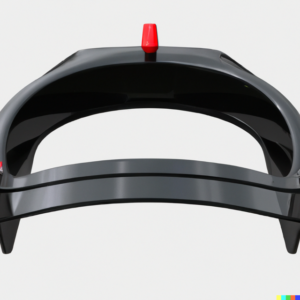How Much Do F1 Tires Cost

Formula One tires are not just to help the cars speed along the circuits. These tires are technological marvels and can withstand track conditions while going in excess of 200 mph.
There are different types of tires – primarily the slick tires, intermediate tires and wet tires – and the slick tires also come in different levels of hardness.
If you have ever watched a Grand Prix weekend, you must’ve seen the pit crews changing tires in less than 3 seconds during the race. Since several sets of tires are used during the course of the race weekend, many of you may be questioning exactly how much these F1 tires cost.
Read on to find out the answers to all your Formula One tire questions, and also see how they relate to how much a Formula 1 car costs.
The Cost of F1 Tires
The current tires used in the 2022 season cost USD $2,700 per set.
Considering that each Formula One car has 13 sets of tires for each race weekend in accordance with the Formula One Regulations, that means that the tires cost around $35,100 for each driver during the course of the Grand Prix weekend. And since each team has two drivers, that equals $70,200 per weekend!
Of course, then there are also 23 races during the season, so that means that the total cost of F1 tires over the course of the season is a staggering $1,614,600 per team (so $807,300 per single driver)!
Who Supplies the F1 Tires?
Pirelli is the tire supplier for all F1 races. They have been the supplier since 2011, and currently, their contract continues until 2024.
Until the contract ends, Pirelli tires are the only tires that will be used on F1 cars.
Before this contract, Formula One had many different tire suppliers, but as things stand for the foreseeable future, only Pirelli will continue to provide the various tire compounds for these top-speed motor races.
Why are only Pirelli tires used?
The main reason that Pirelli tires are used is simply due to the fact that Pirelli was able to secure a long-standing contract with Formula One to be the main tire supplier.
Pirelli has a long-standing history with the sport. The manufacturer first supplied tires to F1 cars in 1950 and remained until 1958.
After being absent for a few years, Pirelli returned in 1981 as the supplier for Toleman, Fittipaldi, and Arrow F1 teams. The surprisingly left the sport again in 1987, only to return again in 1989 for a three-year stint.
In 2011 Pirelli returned with a bang, and since then, it has been the exclusive tire manufacturer for the fastest motor racing events in the world.
Pirelli has been willing to produce faster-degrading tires that show tire wear sooner during the race.
This may not seem like the ideal situation for a Grand Prix race, but the higher degradation of the tires means that the racing team managers need to plan a tire strategy and pit stop strategy, which makes for a much more exciting race.
Since drivers lose several seconds while driving in the pit lane, an incorrect tire strategy can result in a race leader losing a lot of places during pit stops.
And what does Pirelli get out of it? Well, being the tire supplier for the fastest cars in the world is certainly a great marketing opportunity!
Who Pays For F1 Tires?
The Formula One teams are not responsible for purchasing the tires. Rather, the tires are supplied in accordance with a contract with the governing body of Formula One, the FIA.
The contract assigns the tires to the teams since these tires are one of the few components controlled by the FIA.
Tires are able to control grip, which in turn controls the speed of the cars. Should the FIA feel that the cars are going too fast and that safety is a concern, they can request harder tire compounds, which in turn reduces tire grip and forces drivers to drive slower.
There are other ways in which cars can be slowed down, such as adjusting the front and rear wings, which will affect the downforce; however, this will require the cooperation of the teams – and since they are trying to go as fast as possible, it is unlikely that they will willingly comply.
Teams do, however, pay a flat fee at the start of each season to get tires for the entire season.
F1 Tire Developments
Just as the cars develop each year, so too do the Pirelli tires. There are developments each season that enhance the drivability of the tires.
In 2022 there were some significant changes, most notably the change from 13-inch tires to 18-inch tires. This change was implemented to make it easier for cars to drive closer together and also increase the speed of pit stops.
Pirelli has also changed up the materials used in their tires. As F1 aims to be carbon neutral by 2030, the tire giant is following suit with the sustainability initiative. Not only are they using a new synthetic rubber that has improved grip and durability, but they are also using biodegradable and sustainable materials in their tires.
FAQs
How long do F1 tires last?
Unlike street cars, Formula One car tires are not designed for longevity but rather for speed and grip. An F1 tire will last around 37 to 75 miles, depending on the compound used (the hardness of the tire).
Are F1 tires reusable?
No, F1 tires have been specifically designed to be used for a single stint during race weekend. Once the tire starts to degrade, the car will lose its speed, and the tire will have to be replaced.
What are F1 tires filled with?
Formula One tires differ from the tires on your own car. Whereas your tires are filled with air, Formula One tires are filled with nitrogen, and there is no oxygen included in the tires.
How much do the F1 car components cost?
Here is a breakdown of the money spent by the teams. Note that this is only the estimated cost of each component, as all the teams have different budgets.
- turbocharged V6 engine: $10.5 million
- front wing: $150,000
- rear wings: $85,000
- steering wheel: $50,000
- gearbox: $400,000
- hydraulics: $170,000
- halo: $17,000
- chassis: $650,000 – $700,000





